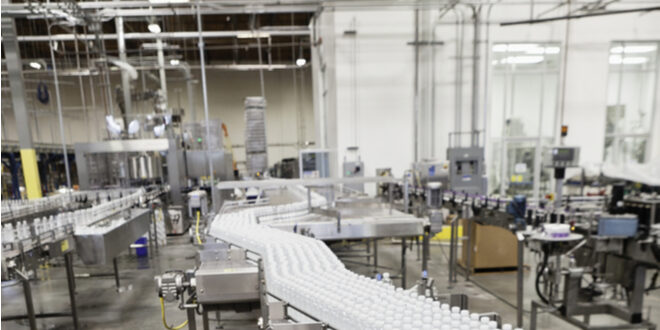Now comes the more daunting challenge: Keeping the all-important sector a float during 2021. With COVID-19 still a factor that won’t be easy, but there are reasons for optimism as the new year approaches.
After one of the most difficult economic years ever, the Inland Empire’s manufacturing sector will enter 2021 in reasonably good shape.
At the least, it won’t be contracting.
That issue was put to rest on Dec. 1, when the Institute for Applied Research and Policy Analysis at Cal State San Bernardino issued its November purchasing managers index, the institute’s monthly assessment of manufacturing in Riverside and San Bernardino counties.
After much back and forth beginning in March, the index for the next-to-last month of 2020 was 55.5. That was down from 61 in October but still comfortably above 50, the line-of-demarcation that determines whether manufacturing is expanding or contracting.
More important, November was the third consecutive month that the index was above 50, the number of months – up or down – that establishes a trend. So even if December drops below 50, Inland manufacturing won’t start 2021 on the wrong side of the ledger.
“After eight months of roller coaster rides, the Inland Empire has finally returned to growth mode, although this month’s level of growth is slighter less than last month’s,” said Barbara Sirotnik, institute director and a co-author of the monthly report, in a statement.
Sirotnik was referring to a pattern that began eight months ago when COVID-19 became a major issue, and the state government in Sacramento began implementing restrictions that slowed the state’s economy. The index would be above or below 50 for two months, then move in the opposite direction in the third month.
That meant a trend, in either direction, couldn’t be established. It’s also why there was a little trepidation before the November numbers were released.
“I wouldn’t say I was overly concerned, but I was glad when the report established that we were in growth mode,” Sirotnik said. “Now all we have to do is stay there.”
It would appear there’s a good chance of that happening, based on the category numbers in the November report.
Prices, production, inventory, and employment were all up compared with October. New orders were down slightly, but that’s not automatically a bad thing, because it indicates suppliers are busy preparing for deliveries.
One possible cloud could be the state of mind of the region’s purchasing managers. While not an optimistic group, to begin with, last month they were more pessimistic than usual.
Only 16 percent of those surveyed predicted that the Inland economy will improve during the next three months and 56 percent said they expect it to stay where it is now. Twenty-eight percent said they expect it to weaken.
Put another way, 84 percent don’t expect the local economy to be on the upswing in the first quarter of 2021.
The economy will recover eventually, but it probably won’t get back to where it was before the pandemic anytime soon, according to Sirotnik.
“A lot of the manufacturing in the Inland Empire is classified as essential because it’s done for the government, so that’s not going away,” Sirotnik said. “Other than that, I think things will stay up for a few months, but it’s hard to predict.”
Much depends on whether Congress approves a stimulus, something that appeared more likely last week than it did one month ago. But what form it will take, and whether it will include anything to help the unemployed or anyone not able to pay their mortgage or rent, wasn’t clear.
“I think a lot of people are waiting to see what the government is going to do,” Sirotnik said. “A stimulus would help a lot. People are floating around wondering what’s going to happen. I think a stimulus, besides the financial help, would also boost people’s confidence.
“It will also help if we get a vaccine that works.”
COVID-19 will still be a factor in 2021, and that means the manufacturing sector will be a little inconsistent at best, said Jay Prag, professor of economics and finance at the Drucker School of Management at Claremont Graduate University.
“People are still going to be worried about their jobs, and that means they won’t be spending as much money,” Prag said. “Demand will drop and not as much will get produced, so manufacturing will be up and down.
“Unfortunately, COVID-19 is going to add to that.”
Some Inland Empire-based manufacturing – Mag Instrument Inc. in Ontario, for example, which makes flashlights used by law enforcement and the military – is so established that it will survive the pandemic without much difficulty, Prag said.
“[Mag Instrument] is so established, and it has such a solid niche, I don’t see anything that would cause it serious trouble,” Prag said. “Toro, in Riverside, would be in the same category, although they could go up or down a little bit with home construction. “So I think a lot of our manufacturing is insulated from the problems we’re having now.”
 IE Business Daily Business news for the Inland Empire.
IE Business Daily Business news for the Inland Empire.


